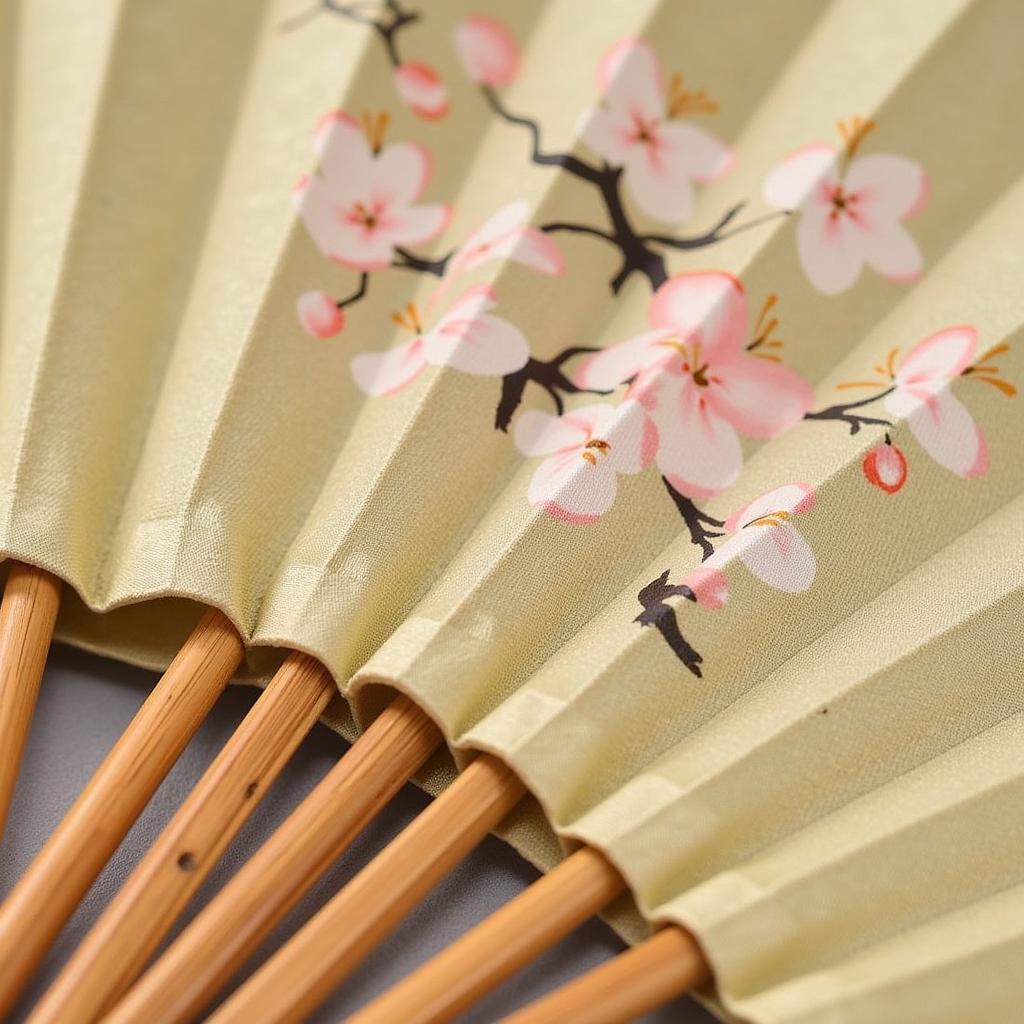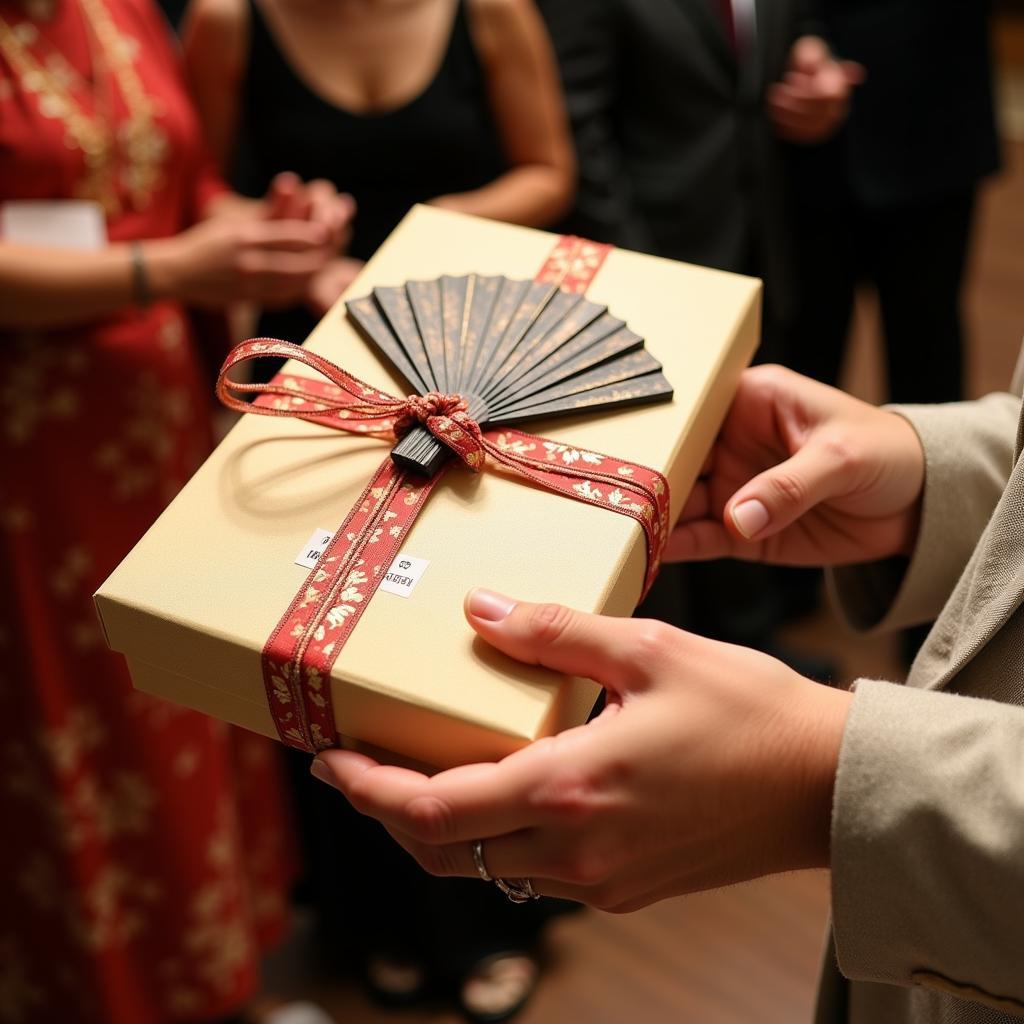The Japanese Hand Fan, more than just a tool for cooling oneself, is a rich symbol of culture and tradition. From its intricate designs to its varied uses in art forms like dance and theatre, the hand fan holds a unique place in Japanese society. This article explores the history, craftsmanship, and cultural significance of these beautiful objects. Learn about the different types of Japanese hand fans and discover their enduring appeal. Check out our selection of Japanese hand fan png files.
A Brief History of the Japanese Hand Fan
The earliest Japanese hand fans, known as uchiwa, date back to the Nara period (710-794). These rigid, non-folding fans were often large and used in ceremonies and rituals. Later, during the Heian period (794-1185), the folding fan, or sensu, emerged. Its compact and elegant design quickly gained popularity among the aristocracy. The sensu became not only a fashionable accessory but also a canvas for artistic expression, featuring calligraphy, paintings, and intricate lacquer work.
The craftsmanship of Japanese hand fans is a testament to the dedication and skill of artisans. Traditional techniques passed down through generations ensure the quality and beauty of these objects. From the delicate bamboo framework to the meticulously painted designs, each step in the creation process is imbued with care and precision. The materials used, such as washi paper and silk, add to the fan’s aesthetic appeal and durability.
 Japanese Hand Fan Craftsmanship: A Close-Up Look at the Intricate Details
Japanese Hand Fan Craftsmanship: A Close-Up Look at the Intricate Details
Types and Uses of the Japanese Hand Fan
There are various types of Japanese hand fans, each serving a specific purpose. The uchiwa, with its simple yet elegant design, is commonly used for everyday cooling. The sensu, on the other hand, is more often seen in formal settings, such as tea ceremonies and traditional performances. Another type, the gunsen or war fan, was historically used by samurai commanders for signaling and even as weapons. You might find some interesting fan art at our AKB0048 Fan Art page.
Beyond their practical uses, Japanese hand fans play a significant role in various art forms. In Noh and Kabuki theatre, fans are used as props to convey emotions, represent objects, and enhance the storytelling. Dancers also utilize fans in traditional Japanese dances like Nihon Buyo, adding grace and fluidity to their movements. Are you a fan of Asian culture? Check out the Asia Fan Store.
The Cultural Significance of the Japanese Hand Fan
The Japanese hand fan holds deep cultural significance. It represents elegance, refinement, and a connection to tradition. Fans are often given as gifts, symbolizing good luck and prosperity. They are also treasured as family heirlooms, passed down through generations. Moreover, the designs on Japanese hand fans often reflect aspects of Japanese culture, such as nature, mythology, and historical events.
What are the different types of Japanese fans? The most common types are the uchiwa (rigid fan) and the sensu (folding fan). How are Japanese fans used in theatre? They are used as props to convey emotions and enhance storytelling. Why are Japanese hand fans considered culturally significant? They represent elegance, tradition, and are often given as gifts symbolizing good luck.
 Giving a Japanese Hand Fan as a Gift
Giving a Japanese Hand Fan as a Gift
Conclusion
The Japanese hand fan is more than just a practical object; it’s a symbol of art, culture, and tradition. From its humble beginnings as a simple cooling tool to its elevated status as an artistic expression, the Japanese hand fan continues to captivate and inspire. Whether you are interested in its history, craftsmanship, or cultural significance, the Japanese hand fan offers a fascinating glimpse into Japanese culture. Did you see the gifts given by Vietnamese fans to the Running Man cast? Find out more about this event: Fan Viet Tang Qua Han Running Man. And for those interested in other kinds of fans, you might enjoy our Jav Fan section.
FAQ
- What is the difference between an uchiwa and a sensu?
- How are Japanese hand fans made?
- Where can I buy authentic Japanese hand fans?
- What are some common designs found on Japanese hand fans?
- How should I care for my Japanese hand fan?
- What is the symbolism of a Japanese hand fan?
- Are Japanese hand fans still used today?
Need support? Contact us at Phone Number: 0903426737, Email: [email protected] Or visit us at: Group 9, Area 6, Gieng Day Ward, Ha Long City, Gieng Day, Ha Long, Quang Ninh, Vietnam. We have a 24/7 customer service team.


